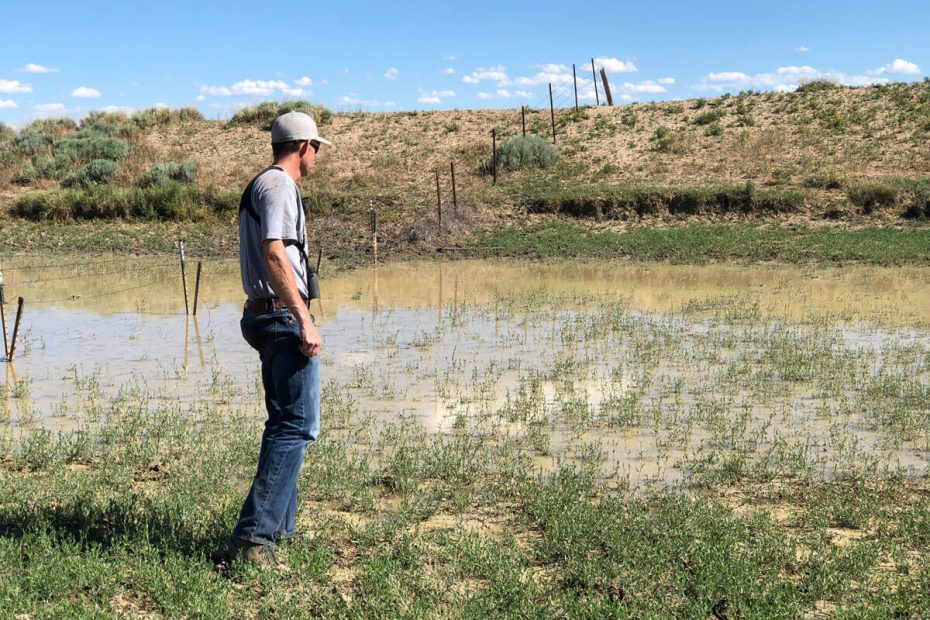Read Part I – HERE
Eyes Up!
Don’t get tunnel vision. I used to do this … a lot. I’d jump on the two-track heading to one of my pre-chosen water sources and bury my foot in the gas. This is a mistake. Take your time. You can learn a lot about your water source before you even get there.
Stop often and glass. Have your binos on your chest and a good spotting scope ready on a window mount. If you take the time to look, there is a good chance you’ll see live goats while driving to your water source. This is a great sign and will fill you with confidence. When glassing, keep the time of day in mind. If it’s a scorcher and the sun is high overhead, know that most goats will be bedded. Be sure to take your time and pick the country apart.

Watch the road! No, not for other vehicles but for tracks and scrapes. Yes, pronghorn scrape much like a whitetail. The major difference is pronghorn will urinate and defecate in their scrape. If the two-track you’re driving on has fresh scrapes, you know bucks are in the area and are likely using the water source you’re heading to.
Stop and glass your tank or pond the second you can see it. No, driving up on a watering goat isn’t a big deal — ranchers do it all the time. Stopping and glassing water, though, gives you the chance of actually catching a goat in the act of slurping water.

If you’re hunting a pond, spring, overflow and the like, mud will be present, and tracks will be easy to identify. Obviously, the more tracks the better. Stock tanks are a different story. Often, the dirt around tanks is concrete-hard, making tracks virtually impossible to identify. Take a quick walk around the tank and then start looking on the cattle trails leading away from the tank. These trails are soft and if goats are using the tank then it will have tracks, and sometimes, scrapes.
Quick Tips
- Check state game and fish regulations and hang a trail camera if possible. Set the camera to time-lapse or video mode. These settings allow the camera a wide-angle view and allow you to see the entire water source. I carry a post-hole driver and posts in my truck. Whether I arrive a few days early to scout or arrive with the season in full swing, I put a few cameras up over the water. There is nothing better than having up-to-the-minute MRI (Most Recent Information).
- Two-track roads can be tough on your truck. If possible, use an ATV or other off-road vehicles to buzz around the prairie. Not only does this reduce wear-and-tear on your truck, but it also speeds up the process of checking water sources. Be sure to check state regulations for necessary vehicle tags and the like.
- Close gates! Even though the land is public, it’s your responsibility to shut gates. Gates are shut for a reason and leaving one open often allows cattle to escape the pasture.
- If you arrive early enough and feel like you have a red-hot water source, back off the source, set up your spotter and spend time watching the tank and the surrounding pasture.

You’re one step closer to settling that pin on a burnt orange side. In Part III, we dive into the critical step of placing your ground blind.
